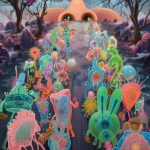nose
Image of a big-eared bat from Scientific American
The New Guinea big-eared bat (Pharotis imogene; specimen pictured above) was thought to be extinct for the past 120 years. The bat is now considered critically endangered or possibly extinct as this specimen is the only known member of the genus. Since very little is known of this endangered bat, researchers who identified this specimen suggest that further research is needed to determine its abundance and distribution. With ongoing deforestation in New Guinea, this species may very well actually become extinct.
Source:
www.…
New research published in Science Reports by Strauch et al., shows that fruit flies can tell the difference between cancerous and healthy cells. The researchers recorded calcium patterns indicative of neuronal activity that was stimulated in response to various odors emitted by healthy and cancerous cells. Because cells with cancer differ metabolically from healthy cells, they emit different volatile compounds that can be detected by olfactory receptor neurons on the antennae of fruit flies. When exposed to breast cancer cells or healthy cells, the flies exhibited different patterns in…
Scientists have discovered just what makes Rudolph's nose turn red:
This air purifier ad from Sharp is a little creepy, in a Spongebob Squarepants way. I love how you can see their fluorescent organelles! Unfortunately I don't see anything here that resembles a virus, but with swine flu all over the news, this serves as a good reminder to wash your hands.
Ad by Takho Lau for ad agency M&C Saatchi of Hong Kong. Found via Next Nature


